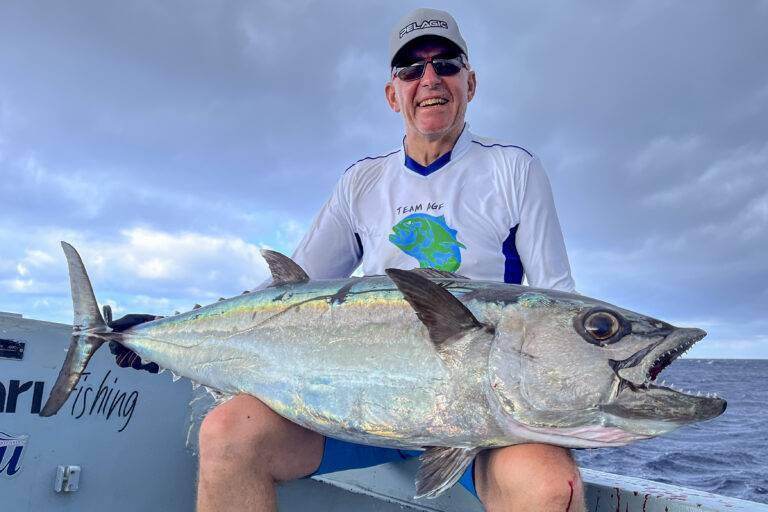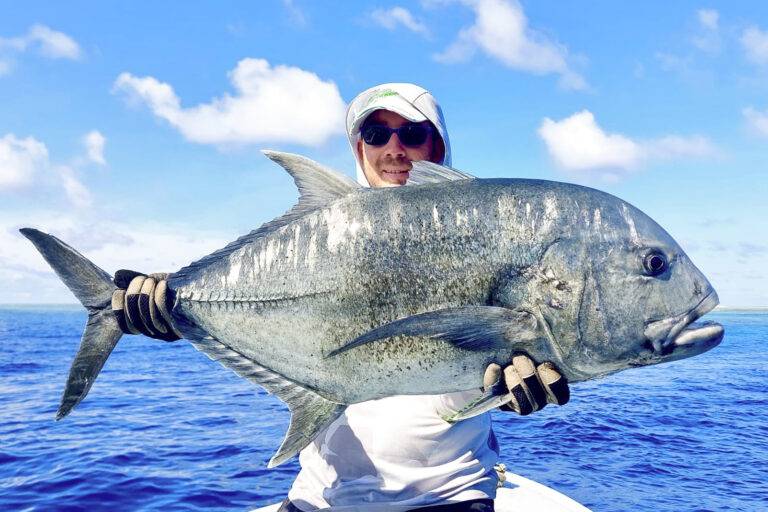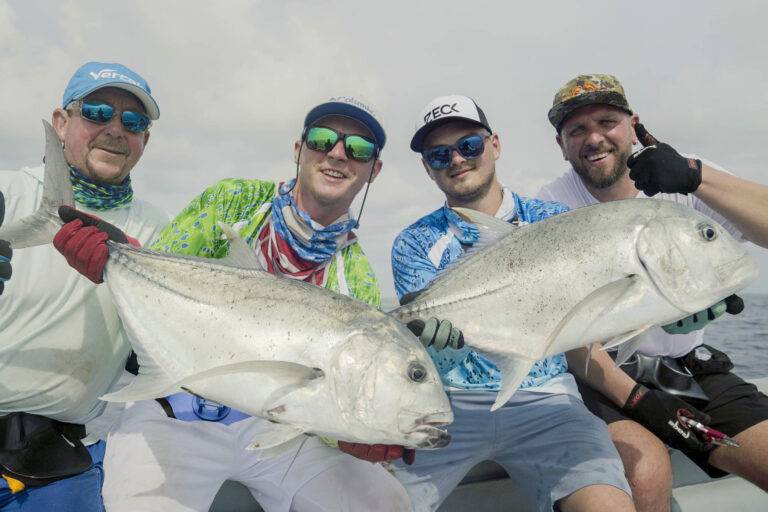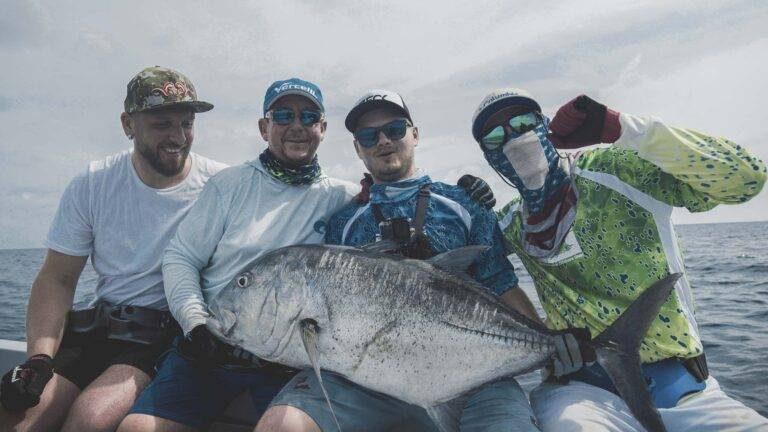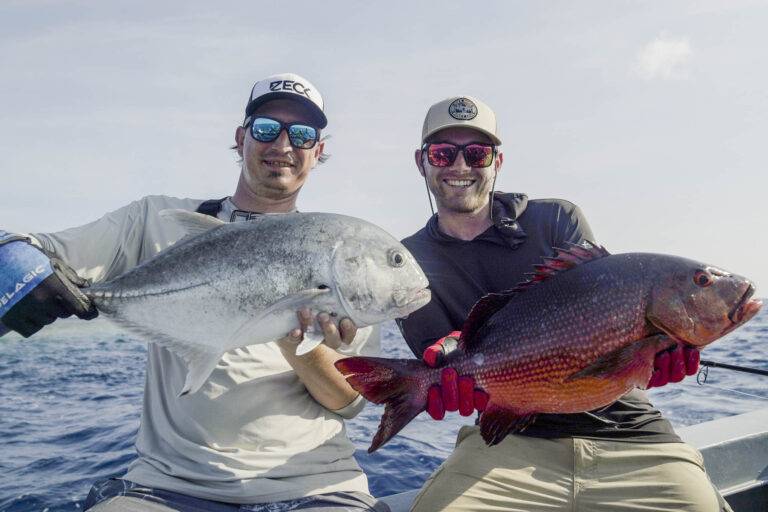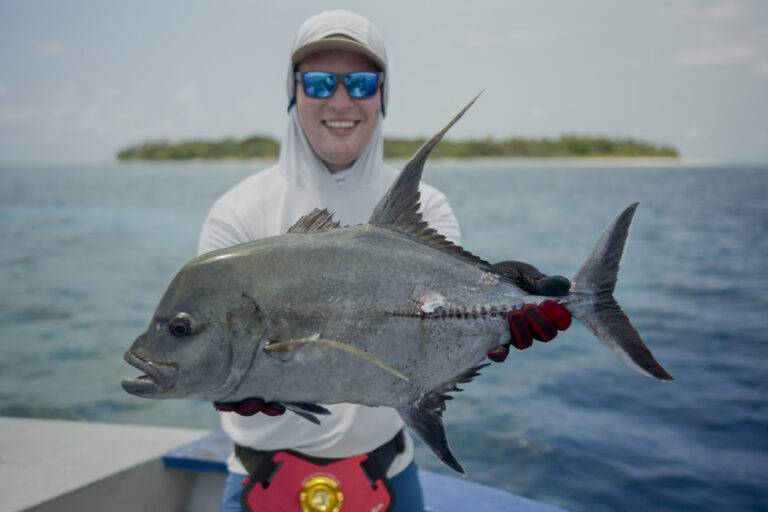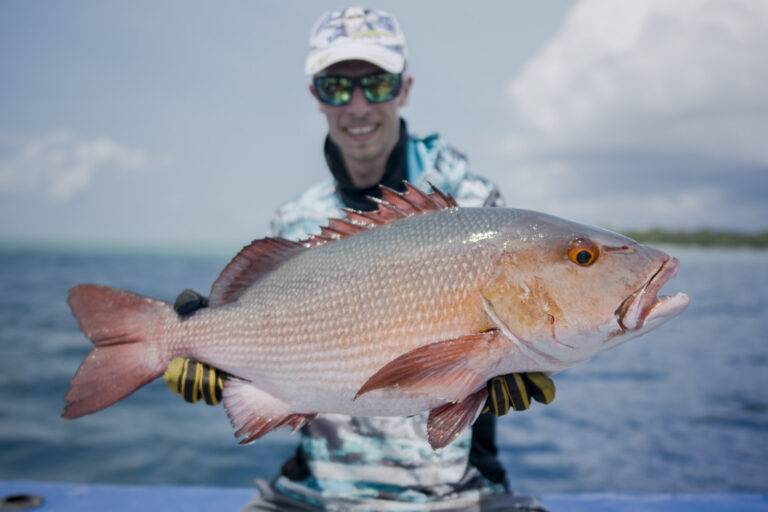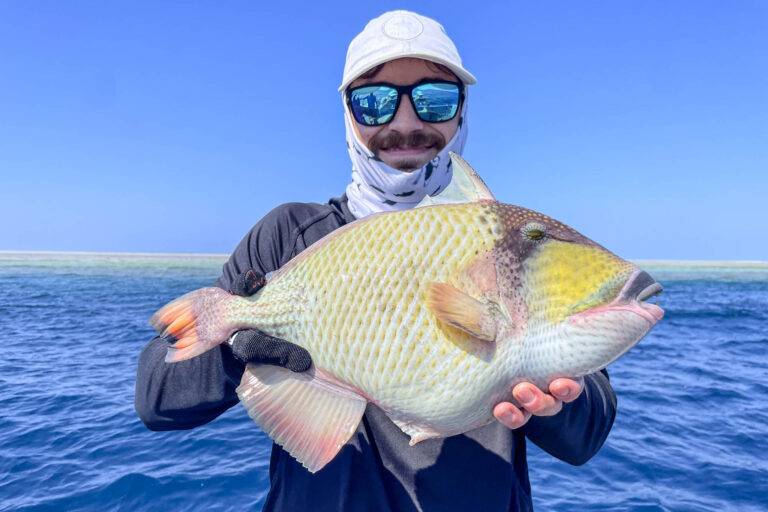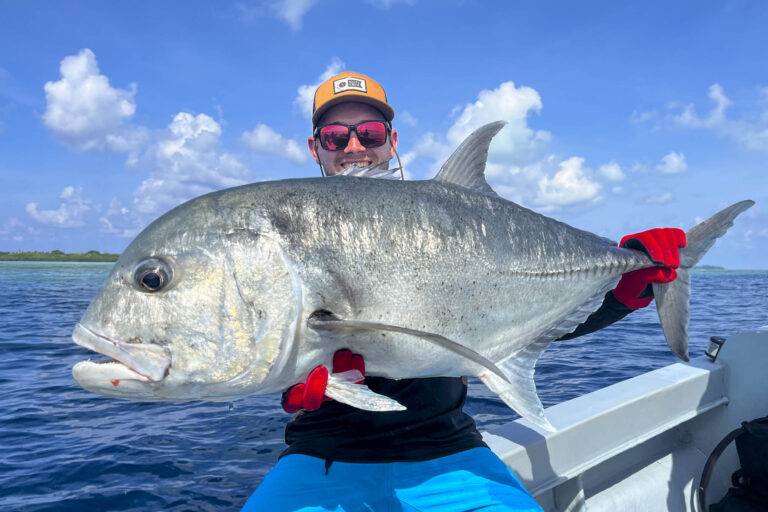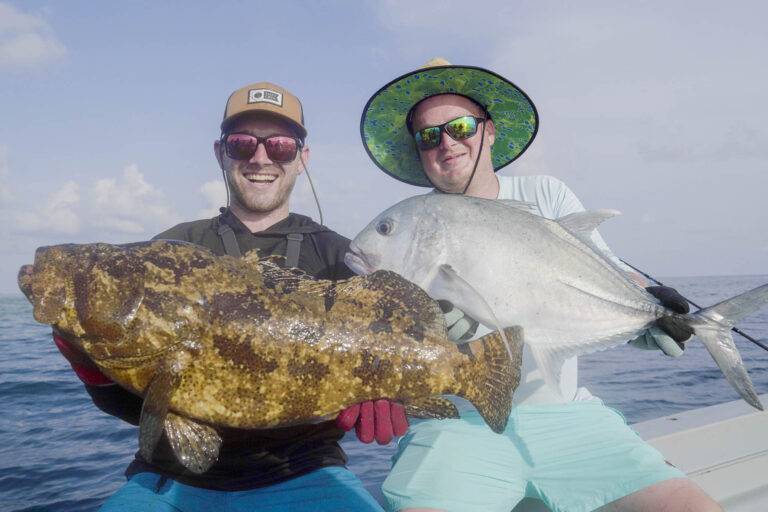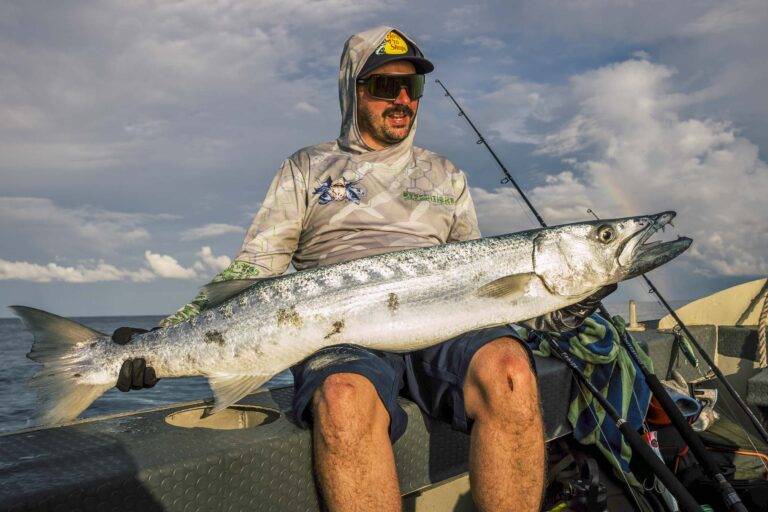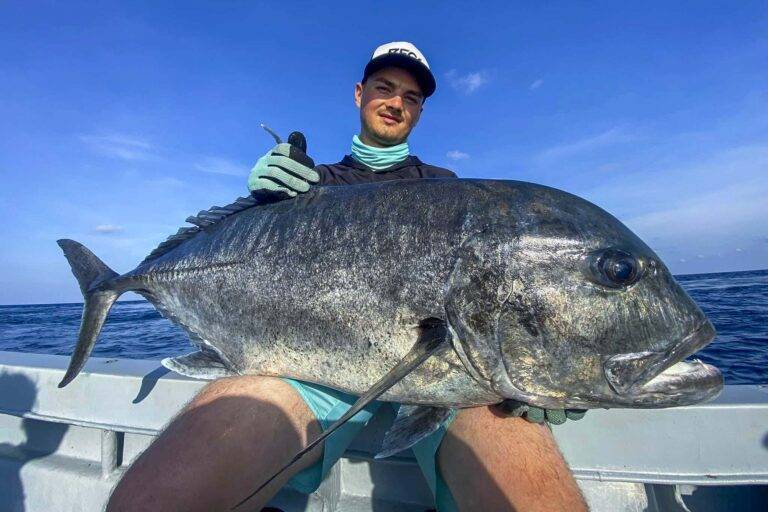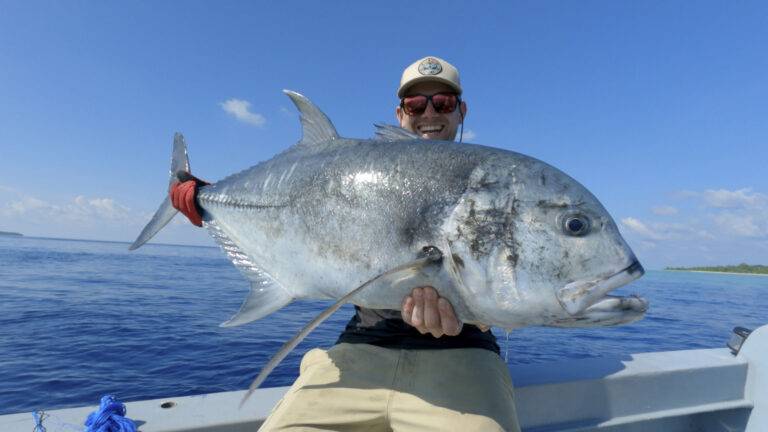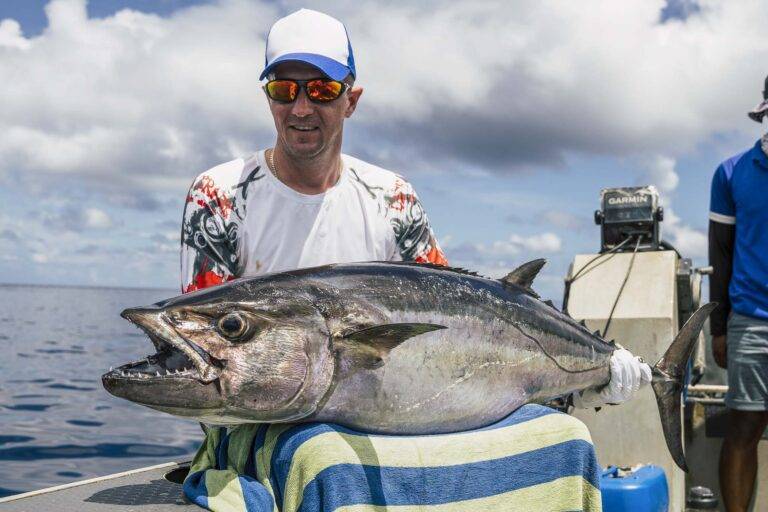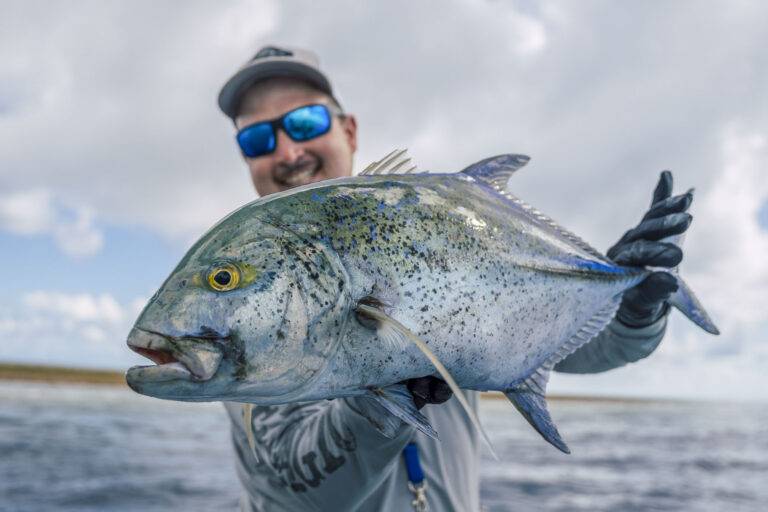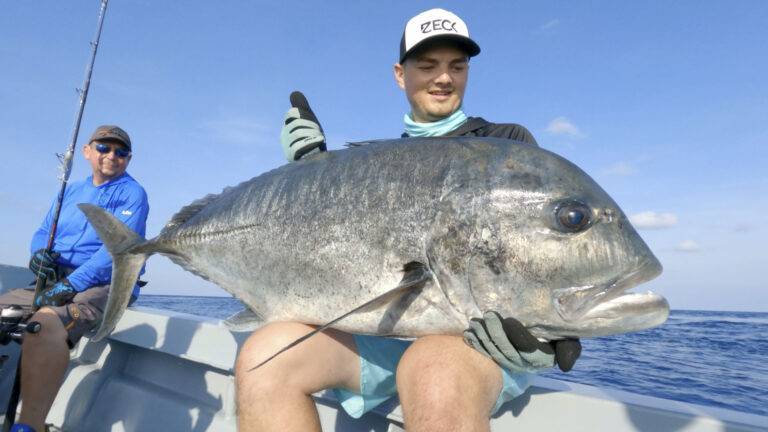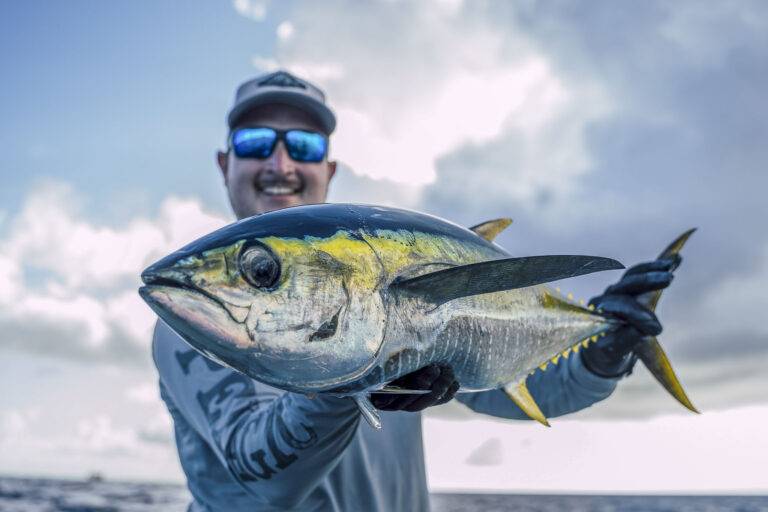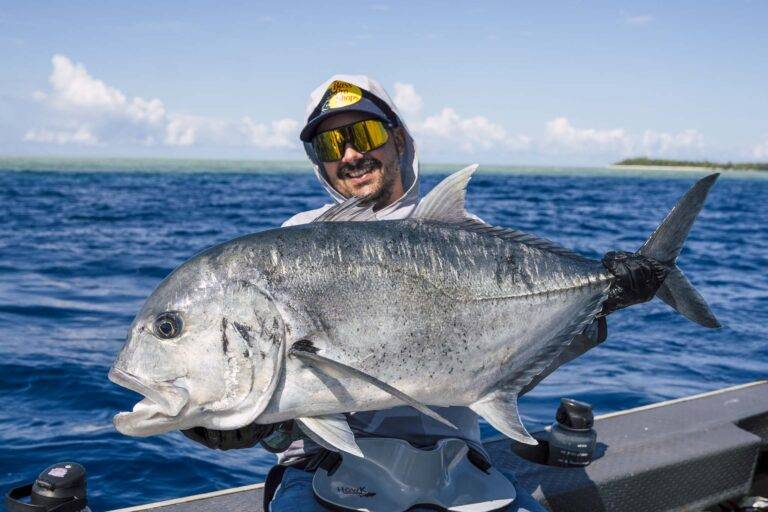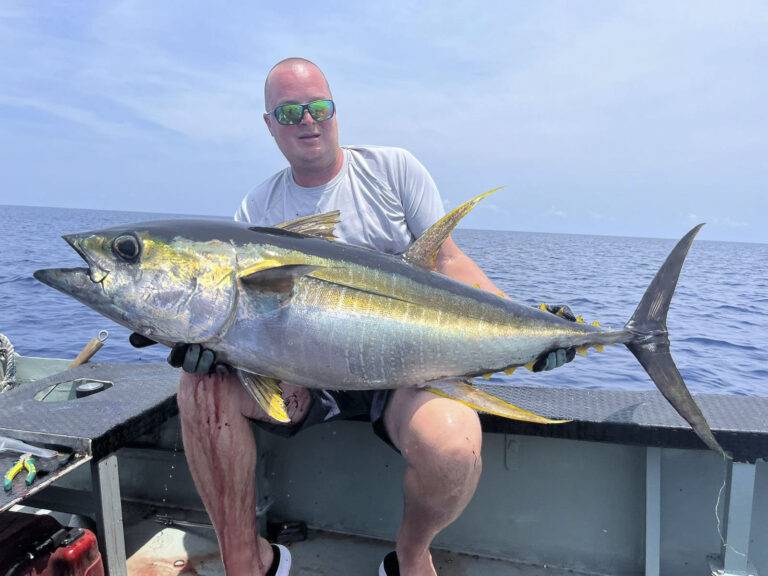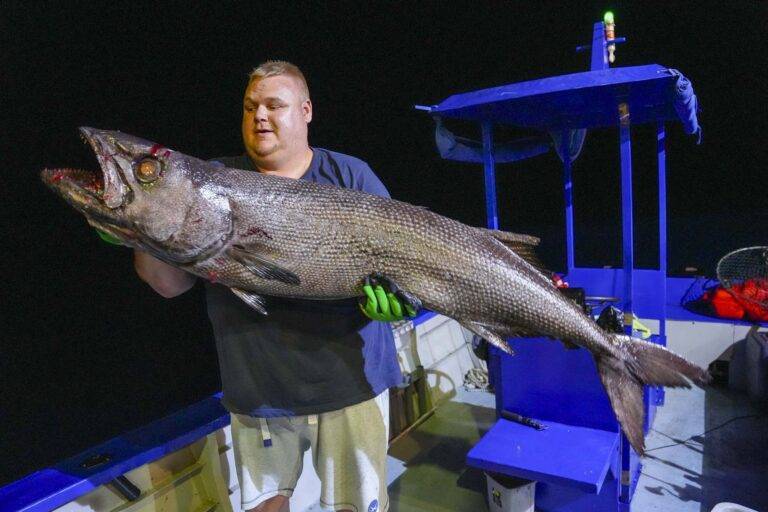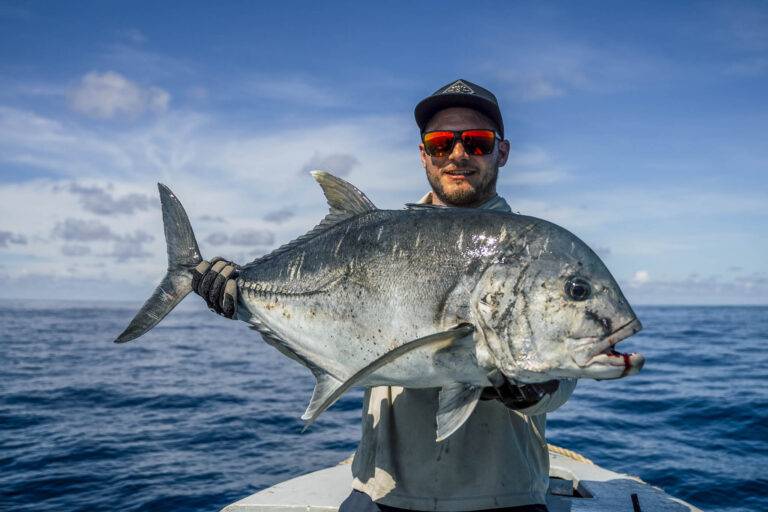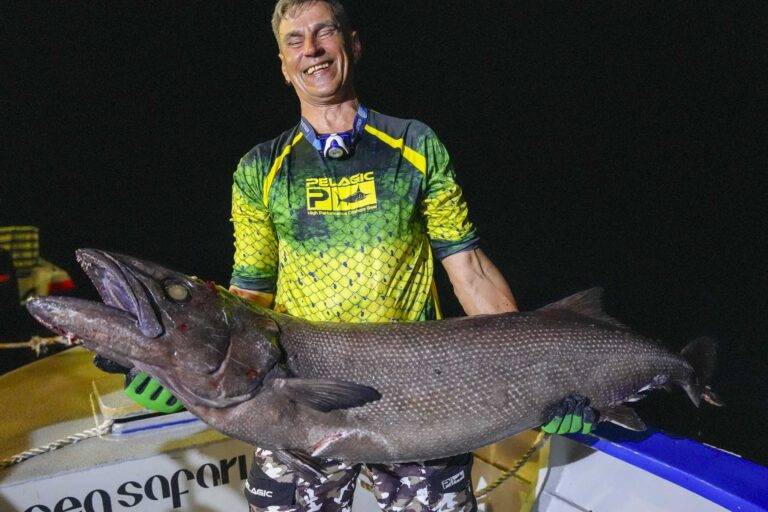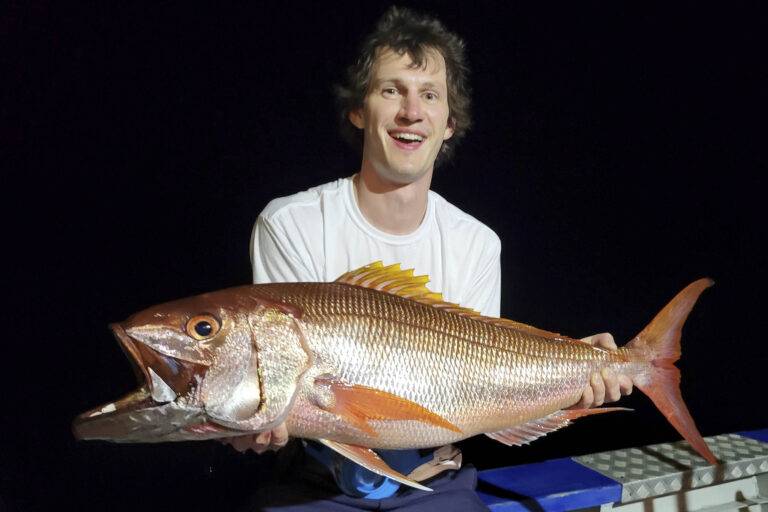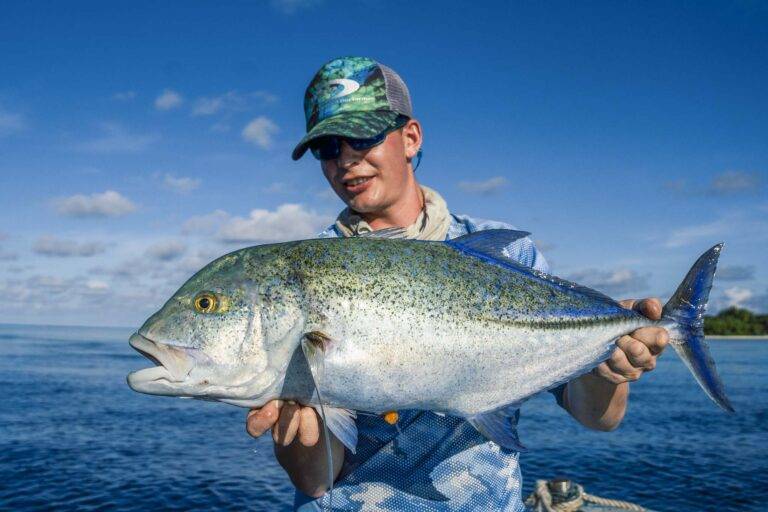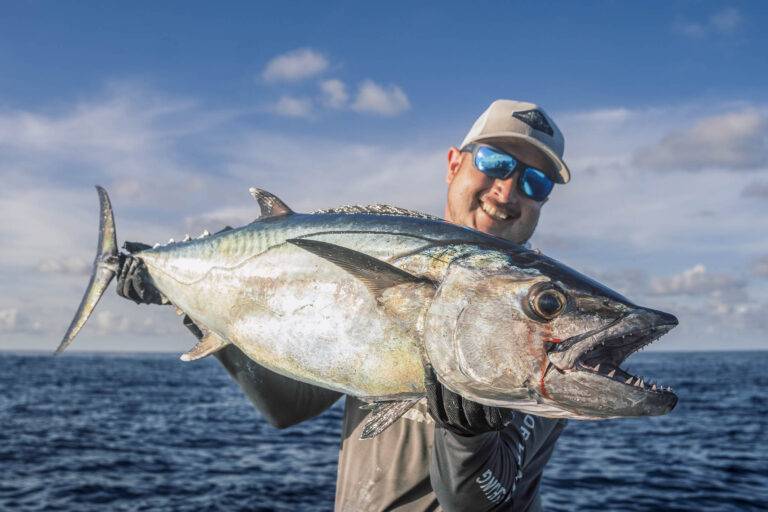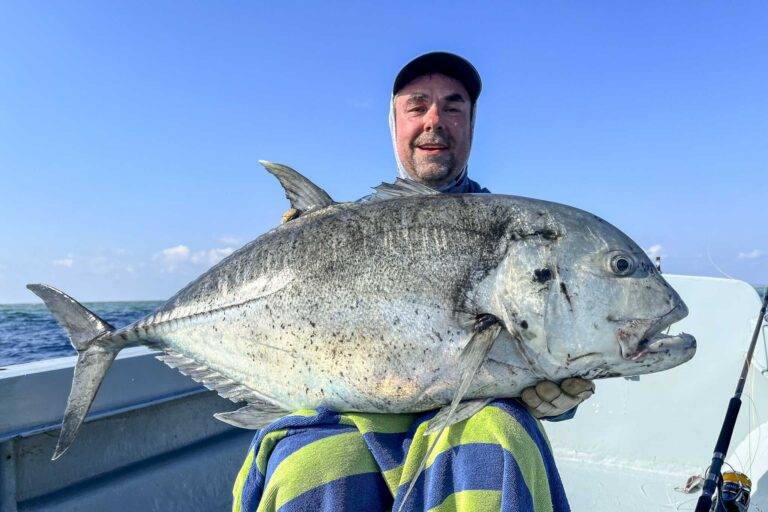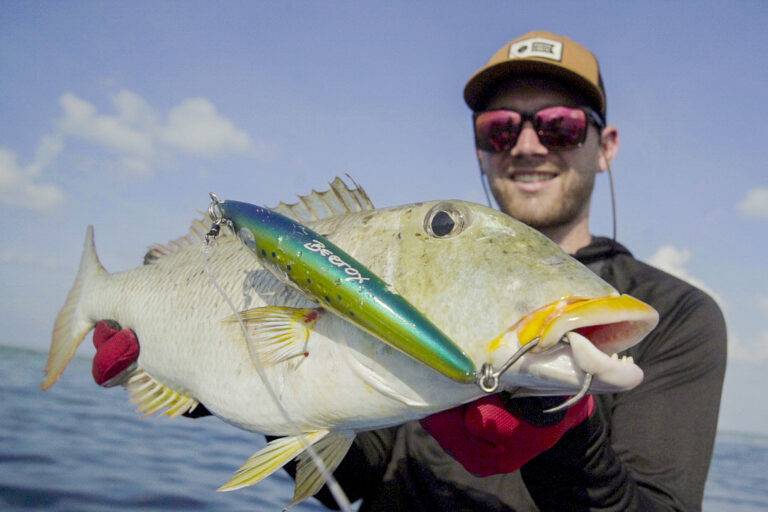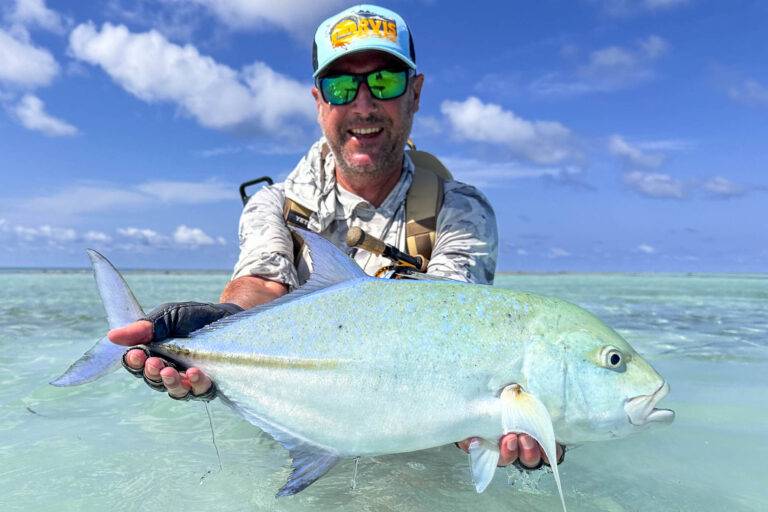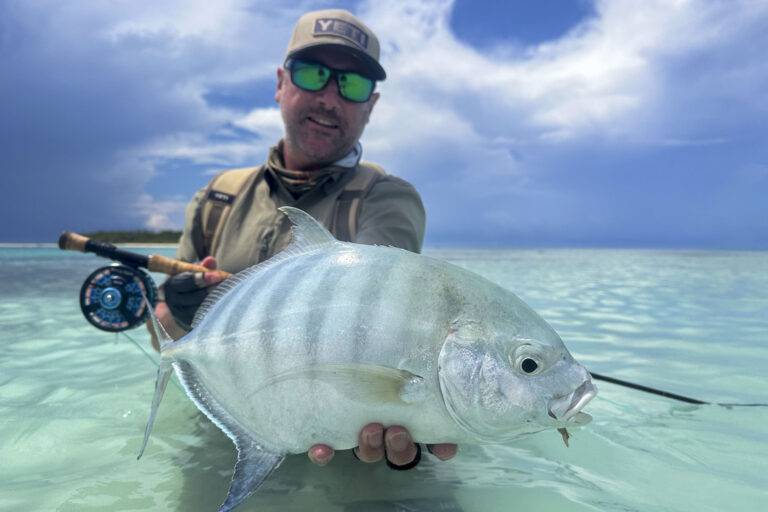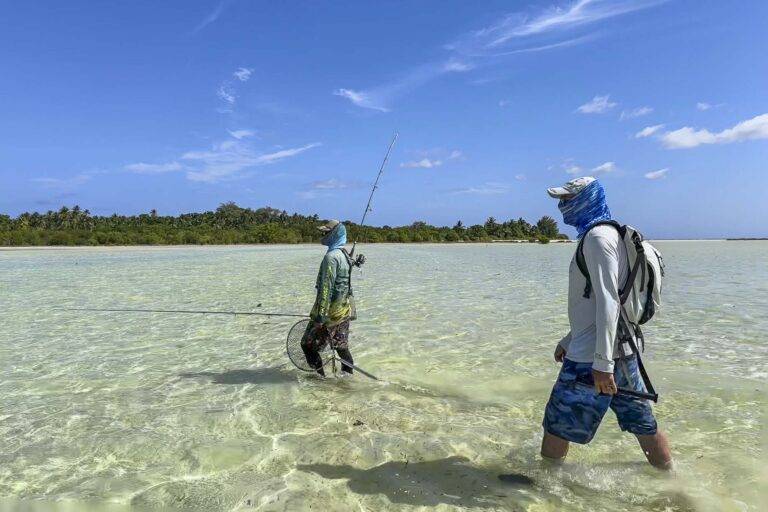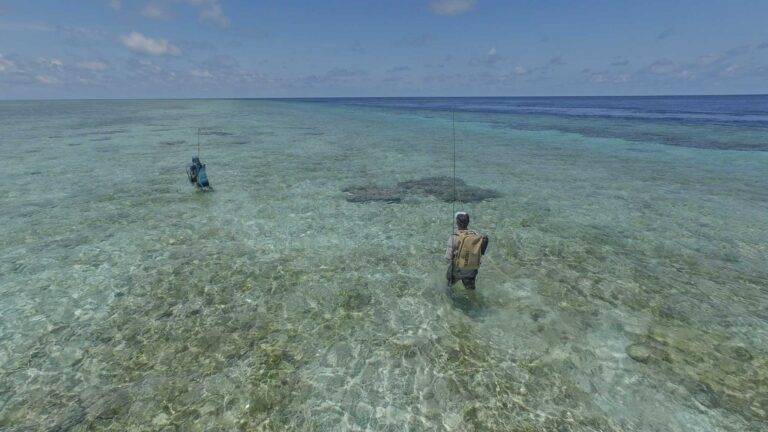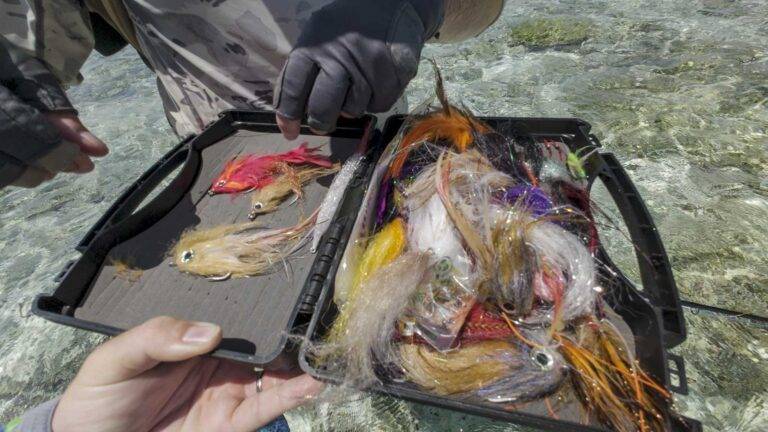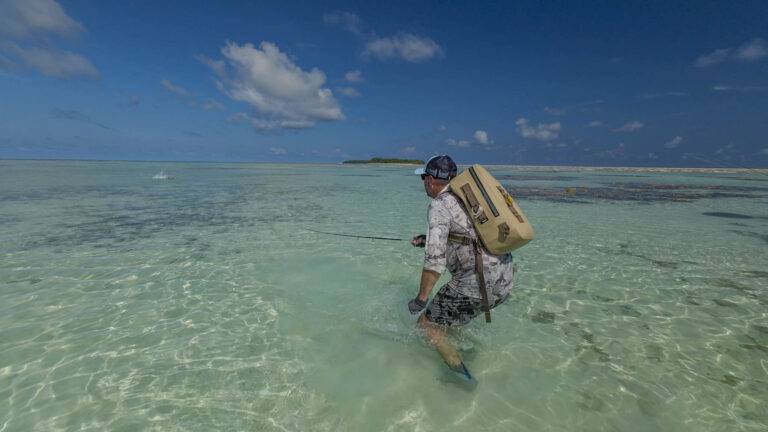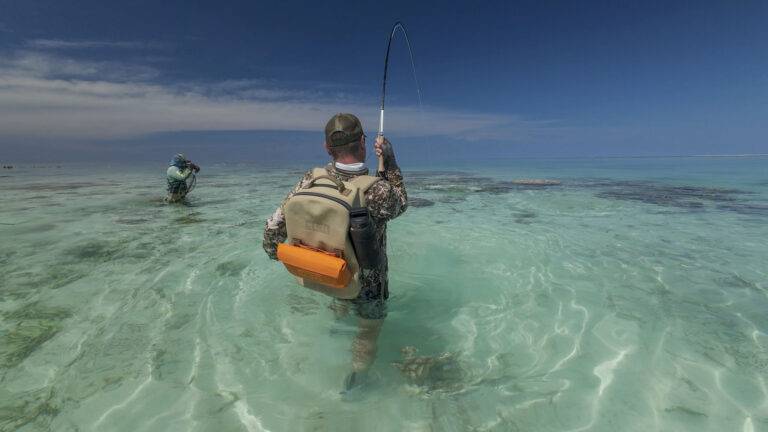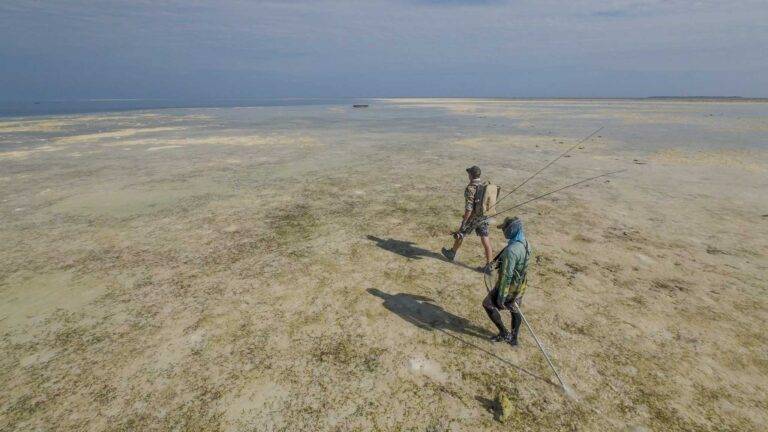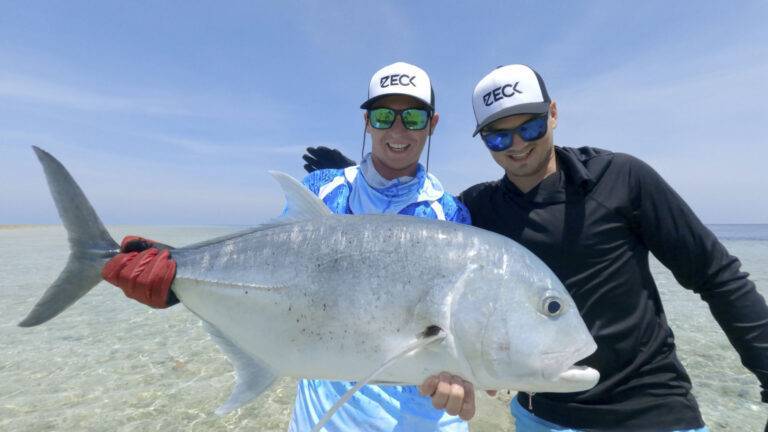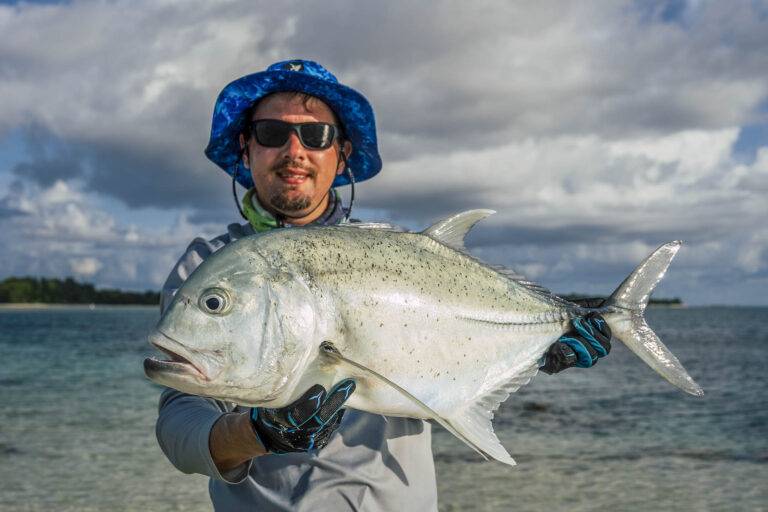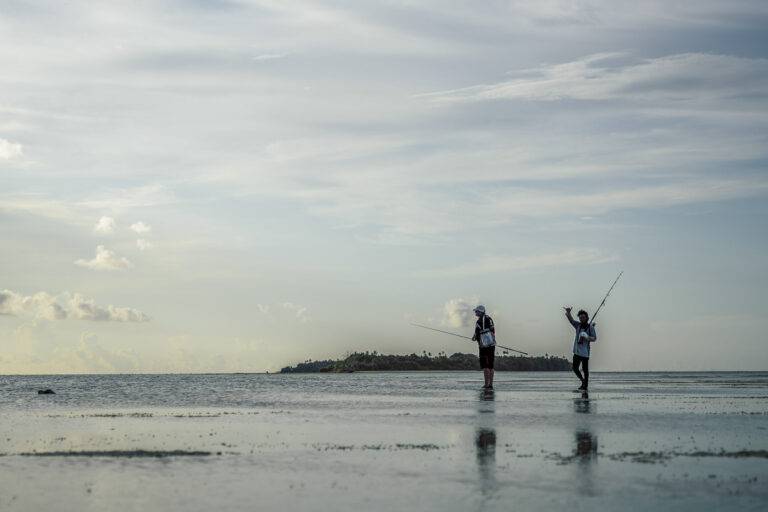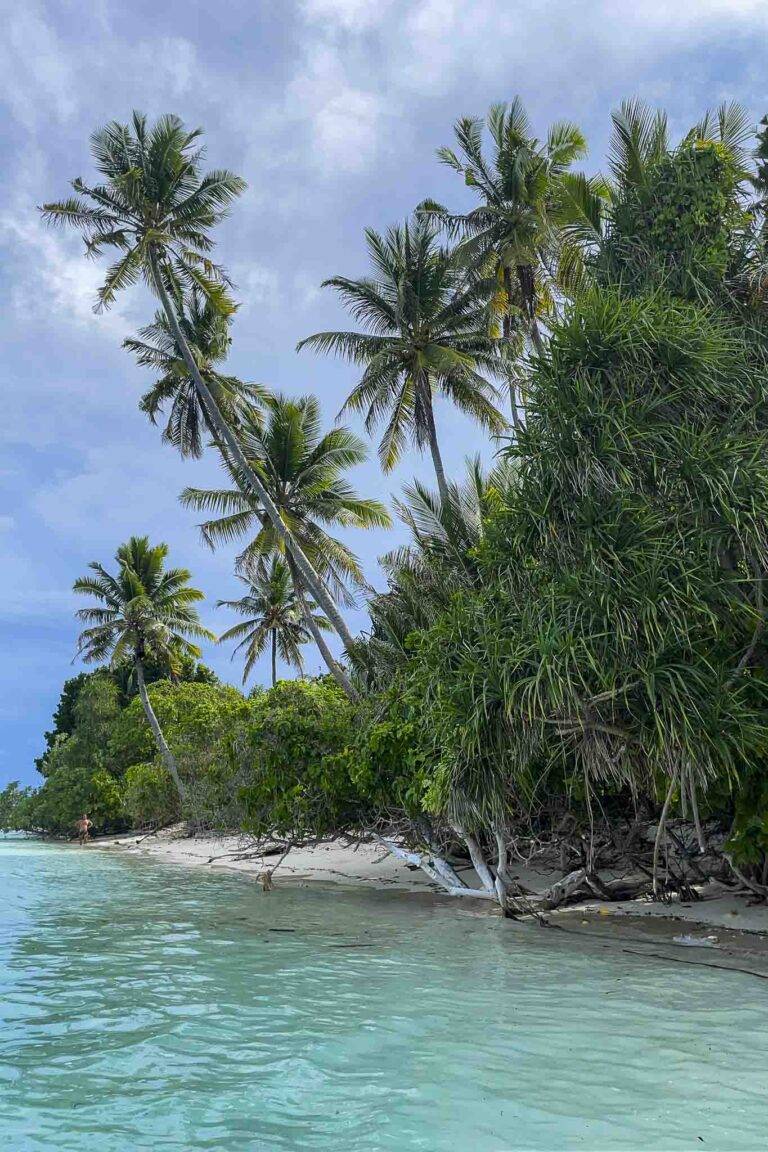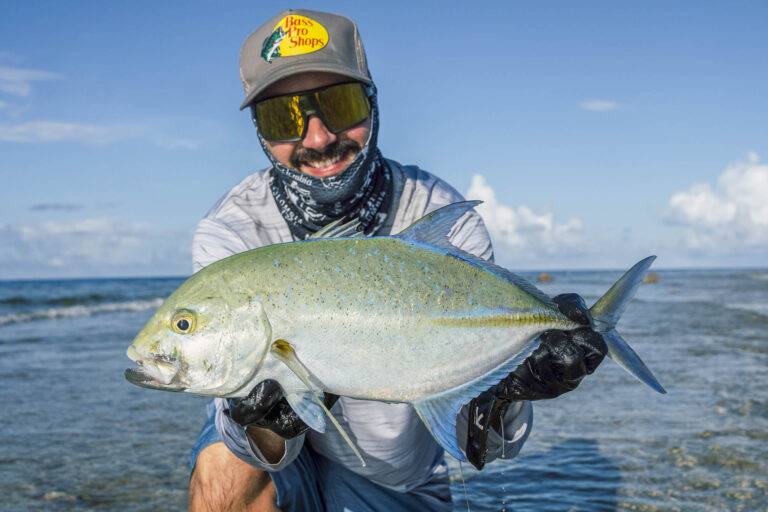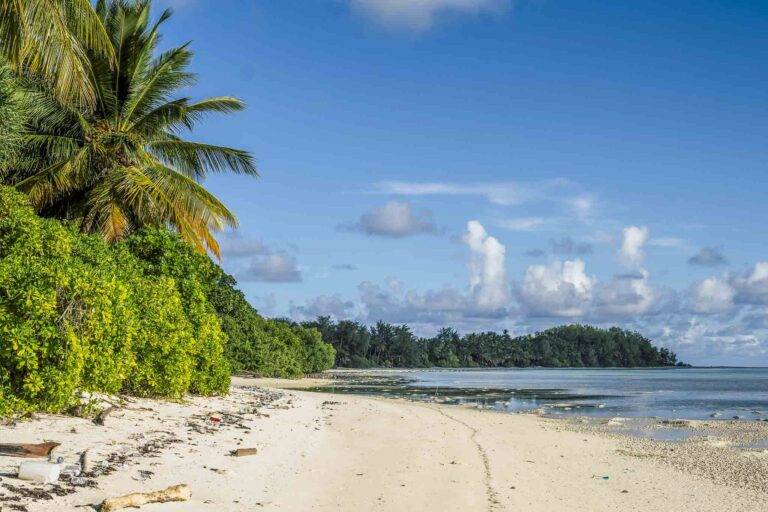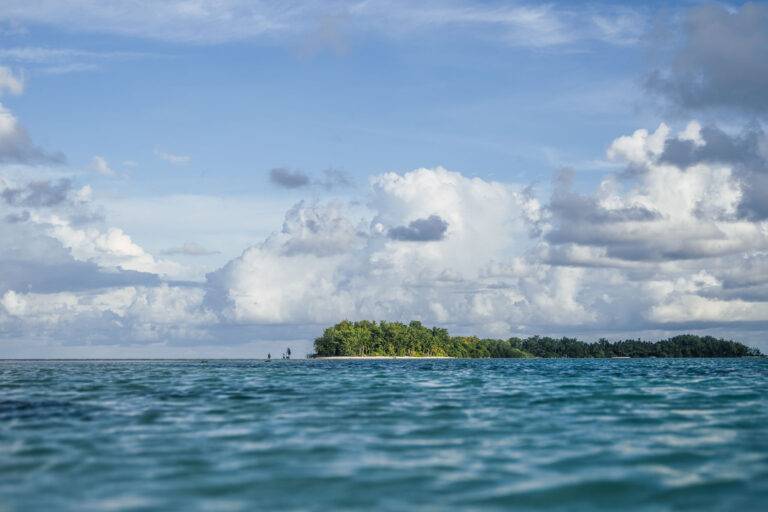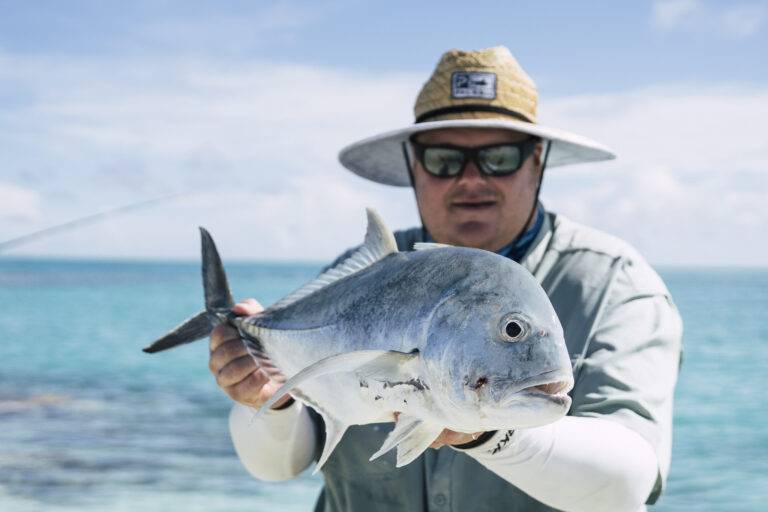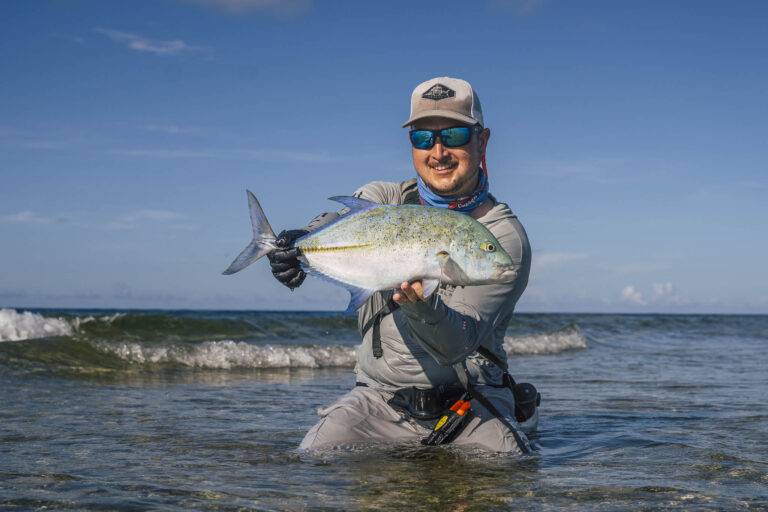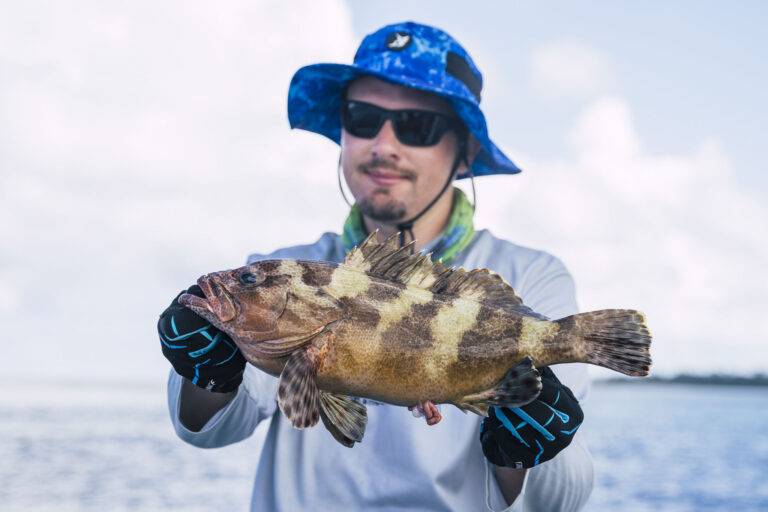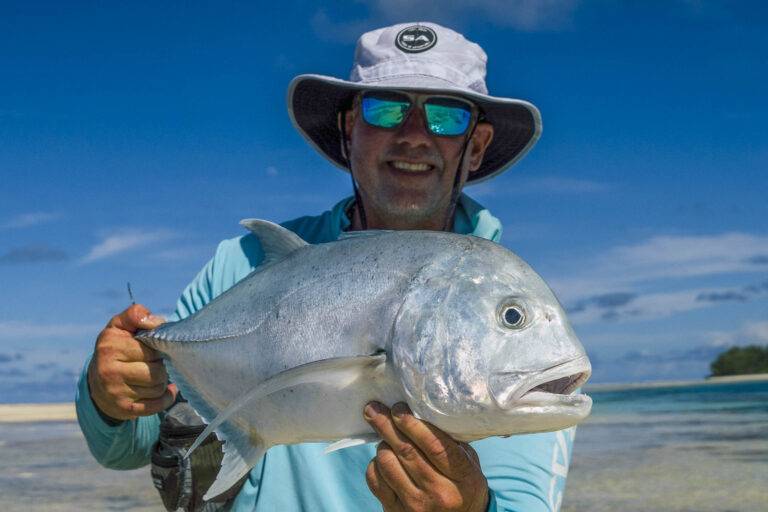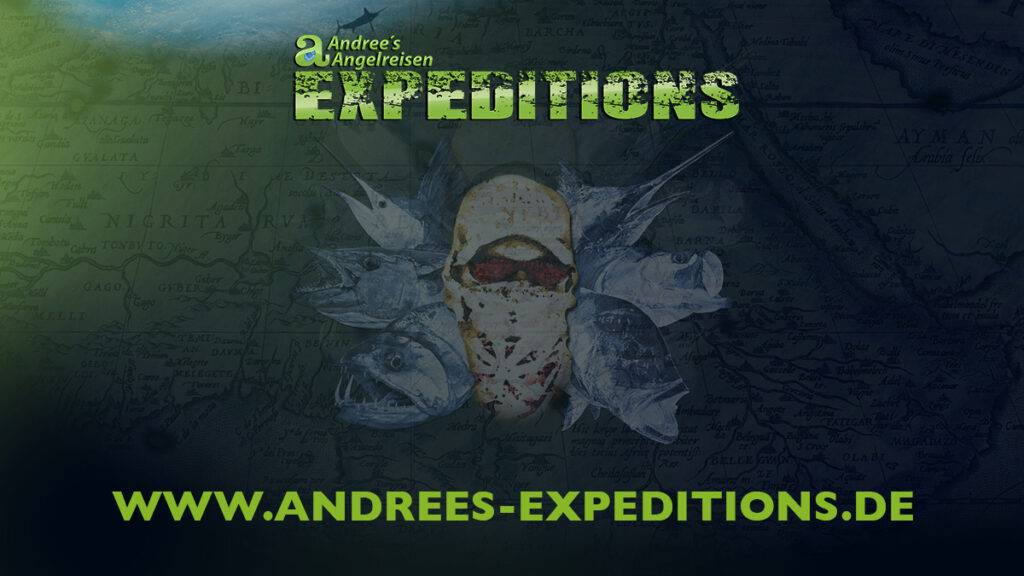Lucipara
doggy island
Lucipara, Indonesia - Fishing Trip
Doggy Island
Your adventure begins with a flight from your home airport to the enchanting city of Lucipara. Next, you’ll fly to Jakarta, the capital of Indonesia. We understand that flight times can vary, and we’re here to help you understand how. It’s important to keep in mind that flight times can depend on the flight connection and stopovers. On average, you can expect a travel time of at least 23 hours.
When you arrive in Ambon, our friendly airport transfer team will be there to pick you up and take you to your hotel, which is just 45 minutes away. When you arrive, you’ll check into your room and then have the chance to relax and unwind at the hotel’s Sky Bar. Two travelers will share a room.
After a hearty breakfast the next morning, you’ll head to the port around 8:30 a.m., where your mother ship will be waiting for you. The drive to the port is just 15 minutes, so it’s really easy to get to. When you arrive on the mother ship, you’ll first receive a friendly briefing on the safety regulations. Then, you’ll be taken to your rooms. Two anglers will share a room with two single beds each.
When the mother ship sets sail, your 15-hour crossing to Lucipara begins. You’ll usually reach the first group of islands at night or just before dawn.
The Fishing
There are different ways to fish in Lucipara. No matter what kind of fishing you’re into — popper, jigging, shore fishing, or fly fishing — the options are endless. You’ll plan each day of fishing with the tour leader and guides, depending on the conditions.
Lucipara is made up of three island groups. You’ll fish all three islands. Depending on the conditions and how many fish you catch, the tour guide will decide how long you’ll fish on which islands. Usually, your fishing adventure will start with the first island group. If the catch results are good, you’ll fish the three small islands for a full day. If the fishing is good, you’ll fish these islands for another morning session before heading to the main island of Luciparas during lunch.
When you get there, you’ll fish the island from the boat or the shore for the next two days. The main island is great for fishing from the shore, especially for fly fishing. There are a few lagoons in the middle of the island that are great for fly fishing. The big dogs and GTs usually hang out near the rough edges of the atoll. You can fish the outer edges by boat with poppers, stickbaits, and jigs.
Since the fish in Lucipara are always on the move, there aren’t any “hot spots” to speak of. You just have to be in the right place at the right time. We’ve learned a lot about how the atolls work. The key here is to stick with it.
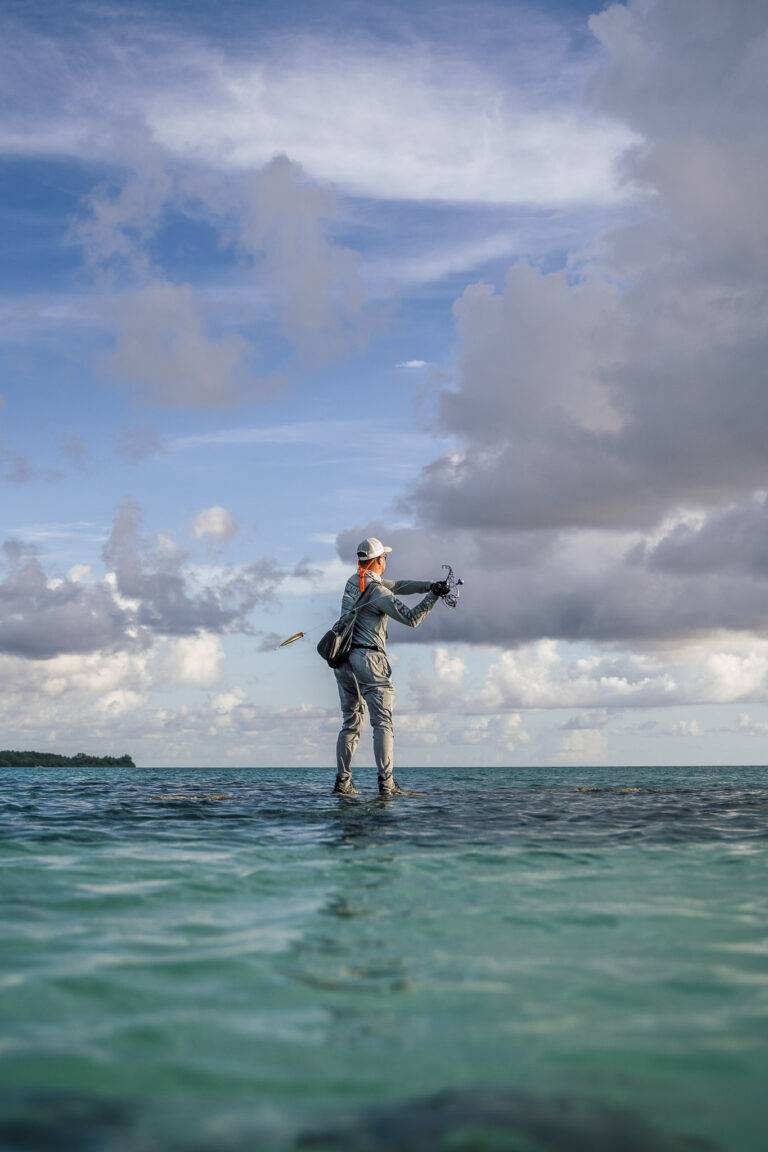
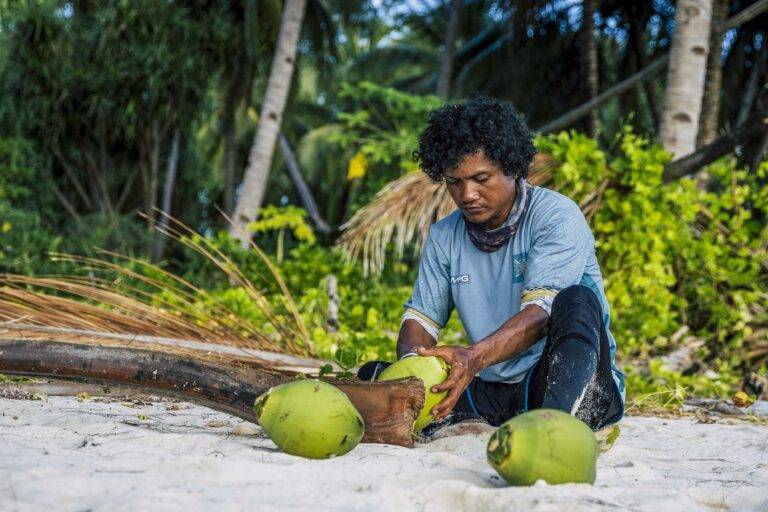
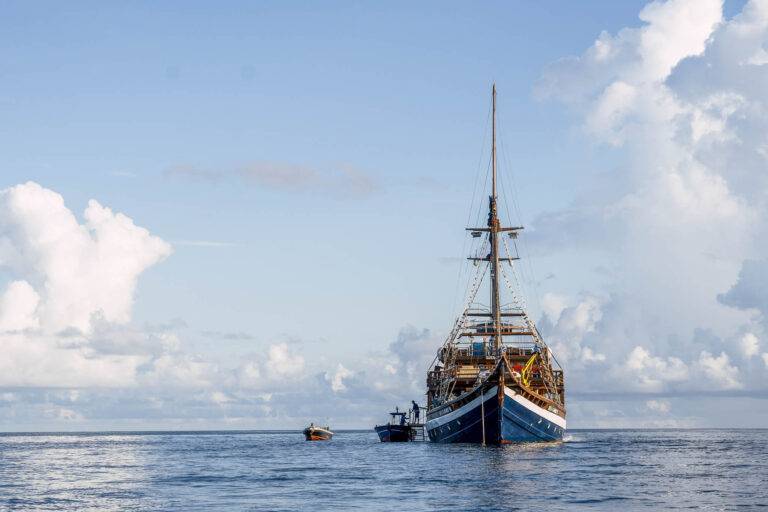
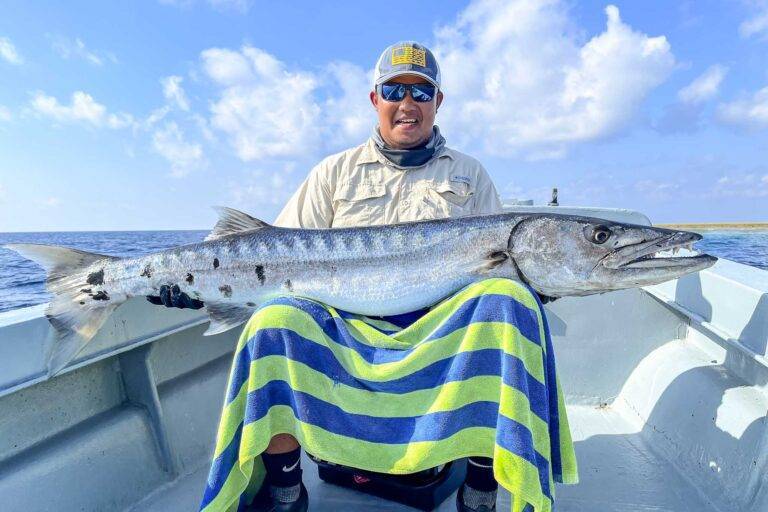
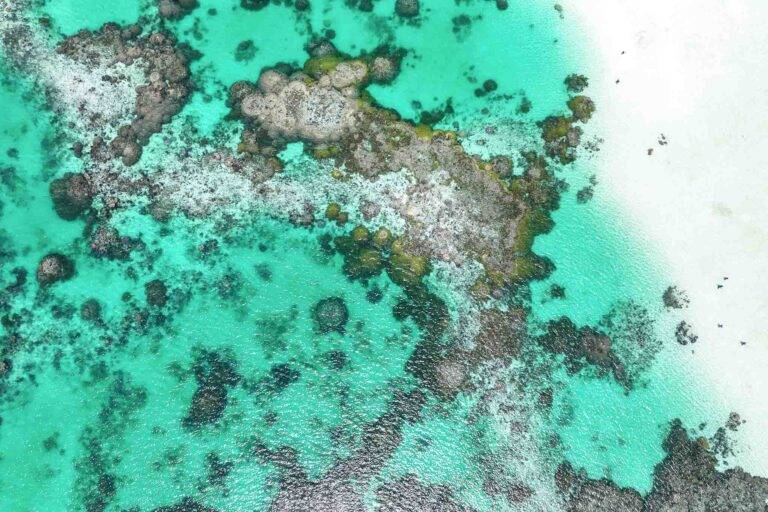
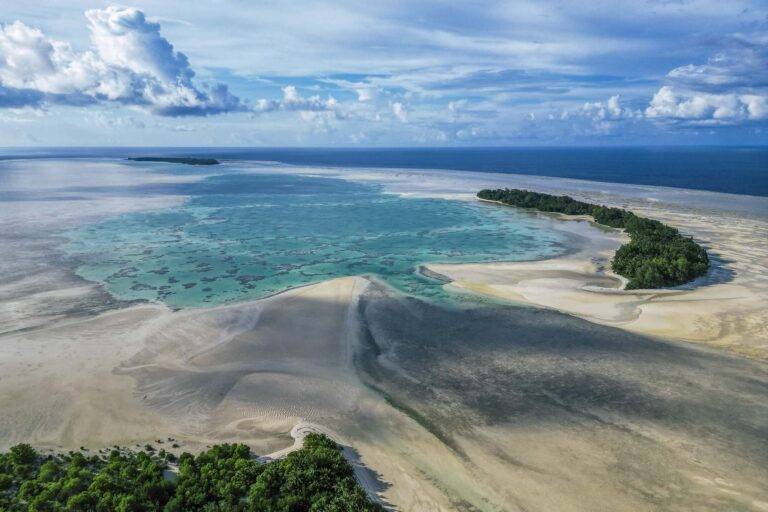

Fishing Strategies!
Fishing around the atolls is very dependent on the tides. The best times to fish are just before and after the tide changes. This is when the currents around the atolls change, and the water is either washed onto or away from the flats. It’s during these tidal changes that you’ll see the most fish activity. So, you can take it easy. The mother ship is always close by, so you can always come back to relax between the good tides. Lunch is always served on the main ship. This is a comfort that you don’t often get to enjoy on tropical fishing trips.
If fishing on the main island doesn’t go as planned, we head to the “island without an island.” This is an atoll that’s totally covered by water at high tide. This island has been a great place to fish lately. You can catch GT and doggie with stickbaits. There are also some good jigging spots on this atoll. For fly fishing, the island is one of the best spots on Lucipara. The triggerfish population is huge, and GTs, barracudas, coral trout, and other fish species hunt on the flats at high tide.
You can see that fishing on Lucipara is always dependent on the external conditions. So, the decision on which island group to fish and for how long is always based on these conditions and catch results. You’ve got a total of eight full days of fishing to use. Usually, your last day of fishing is at the first three islands of Lucipara. This is because the return trip to Ambon is the shortest from here. You’ll be leaving late in the evening and getting to Ambon the next morning.
The departure
Your transfer will be waiting for you in Ambon to take you back to your hotel. You’ll check into your rooms and get one last look at the view from the Sky Bar before your transfer back to the airport the next morning.
Depending on your flight connection, you’ll then fly back to your home airport via Jakarta.
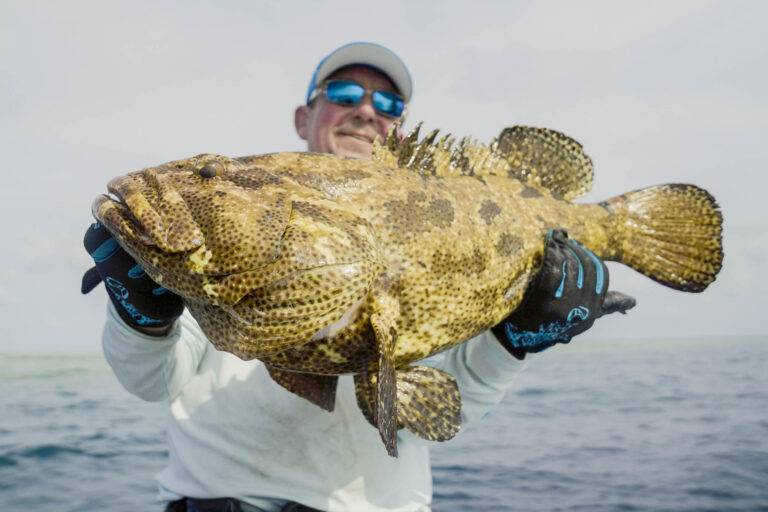
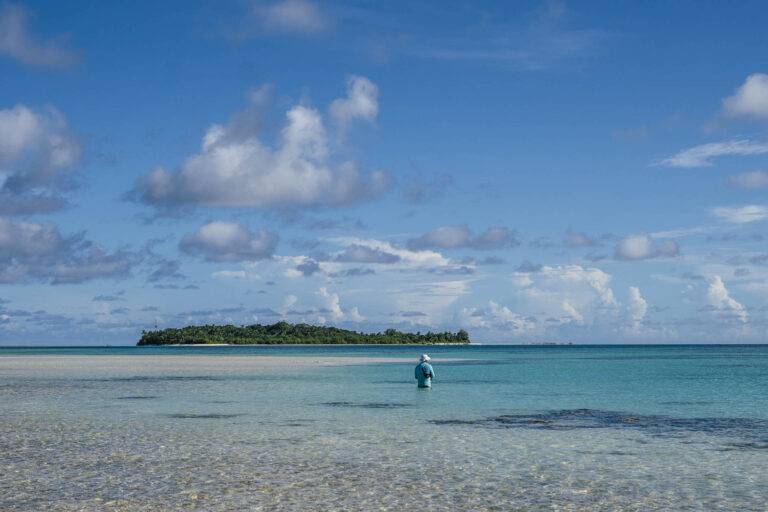

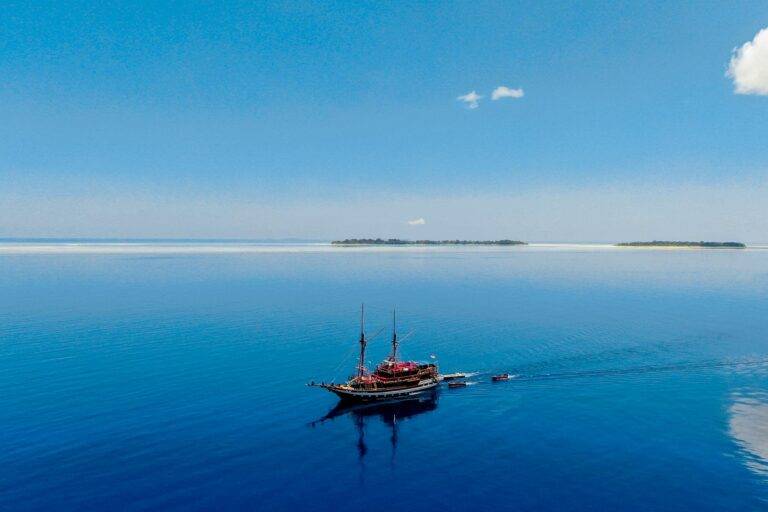
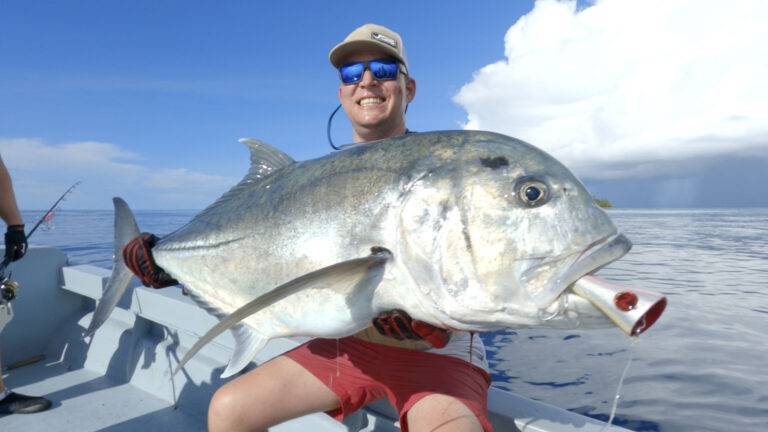
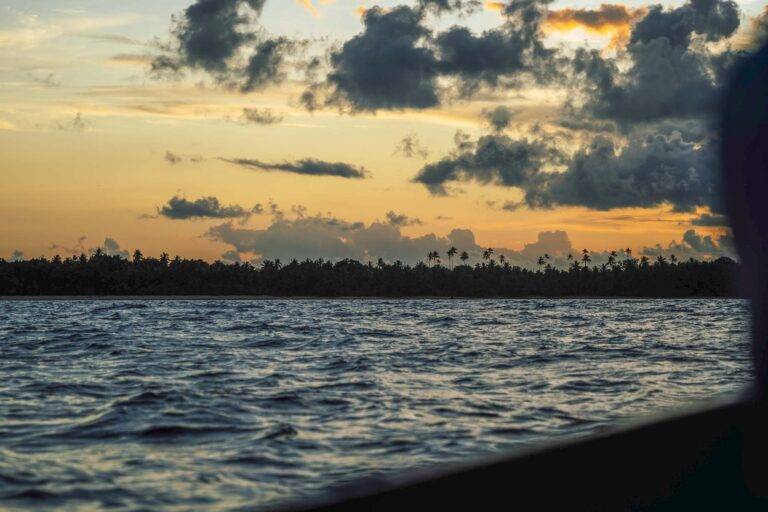
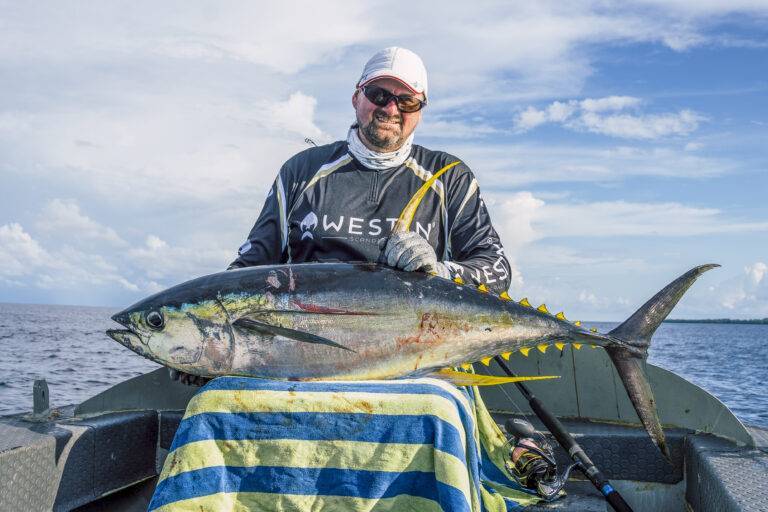
Saltwater Fly Fishing
Saltwater fly fishing on Lucipara is one of a kind. You can catch giant trevally, as well as large triggerfish, barracudas, coral trout, napoleon fish, and other trevally species. We’ve been doing fly fishing for a while now, and we’ve got a pretty good idea of when and where to find success.
Fly fishing on Lucipara is all about the tides and the sun’s position. So, we plan each fishing trip with you in mind to make sure you have the best chance of success.
GT Fly Fishing
Fly fishing for giant trevally is an incredibly exciting experience. You focus on the various channels on the flats, which fill or empty with the rising or falling tide. These highways are usually the best spots because the GTs swim into the lagoons via these channels. This means you can catch the fish on their way to the inner lagoons.
When the water level rises a bit more, you can start fishing in the lagoon’s inner area. There are also channels that the fish use to get around the lagoon. With the sun at your back, you wade through these channels, always ready to cast for passing GTs. You’ve gotta be a good fly fisherman to present the fly quickly enough. Every second here is important.
When the tide is going out, you should mainly fish the channels from which the water drains from the lagoons. This is because the GTs head back to the lagoons when the tide is going out. We’ve also had great success fishing the atoll drop-off lately. The really big GTs in particular swim from the deep areas to the first few meters of the flats when the tide is rising and falling. So, don’t forget to take care of the outer areas of the atolls. There, you wade along the edge and cast at everything that swims onto the flats. GT fly fishing on Lucipara has enormous potential, and you have the chance to discover it!
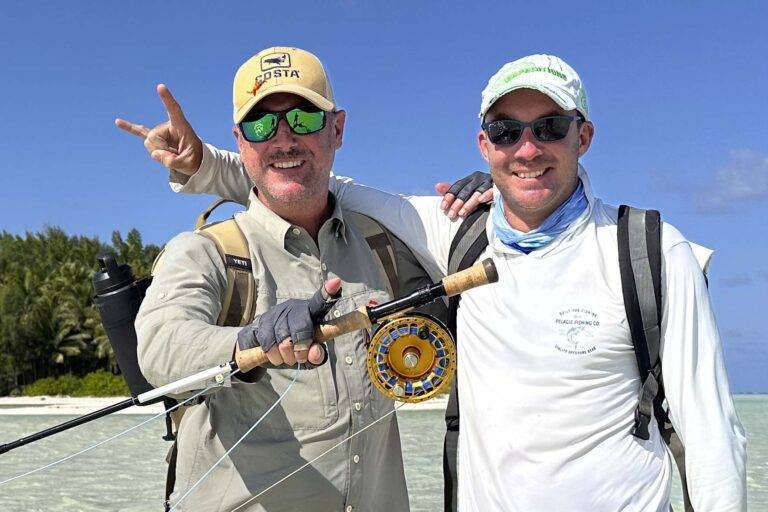
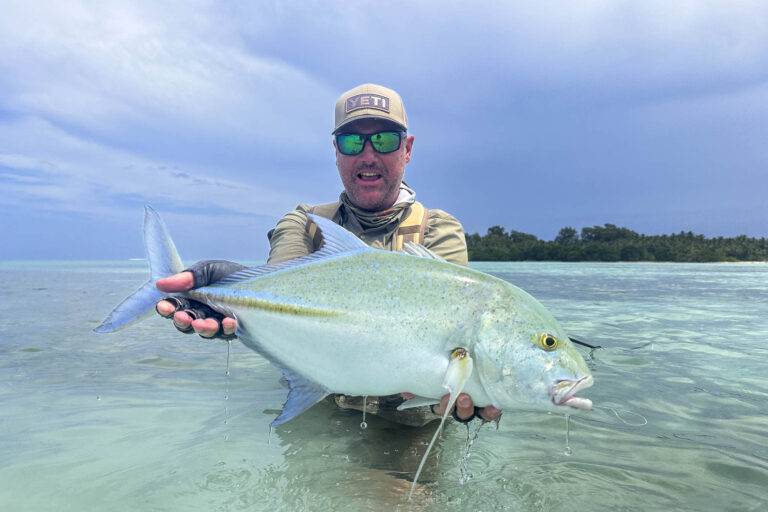
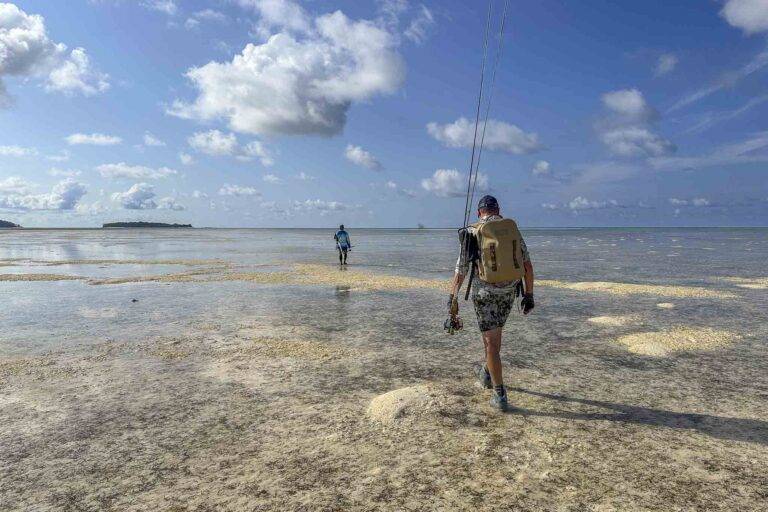
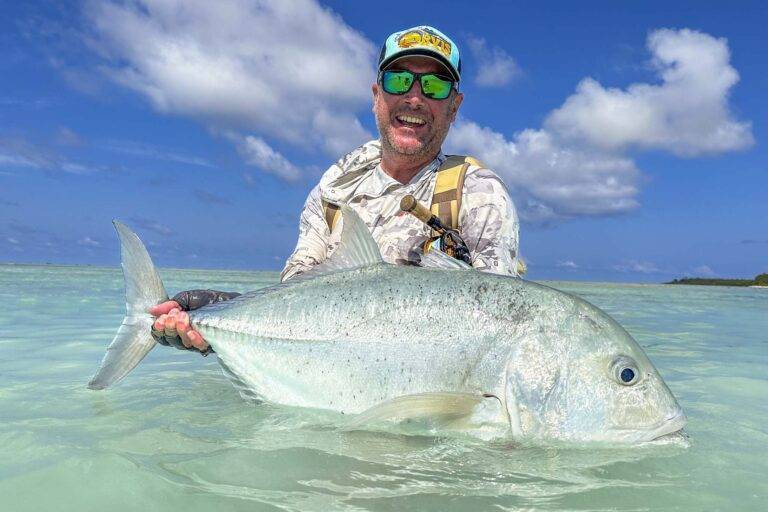

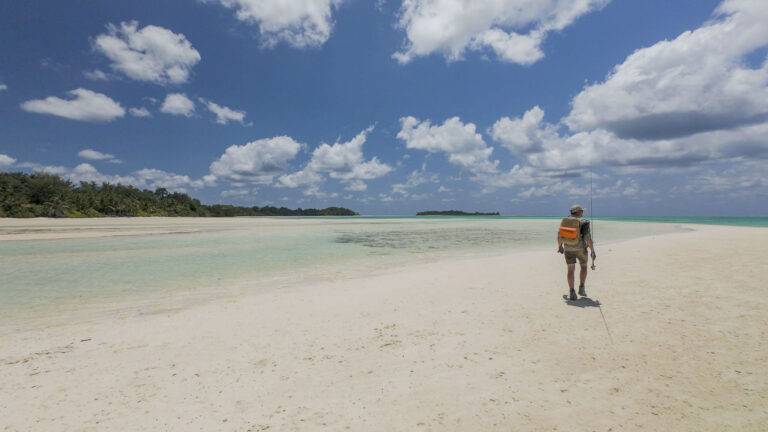
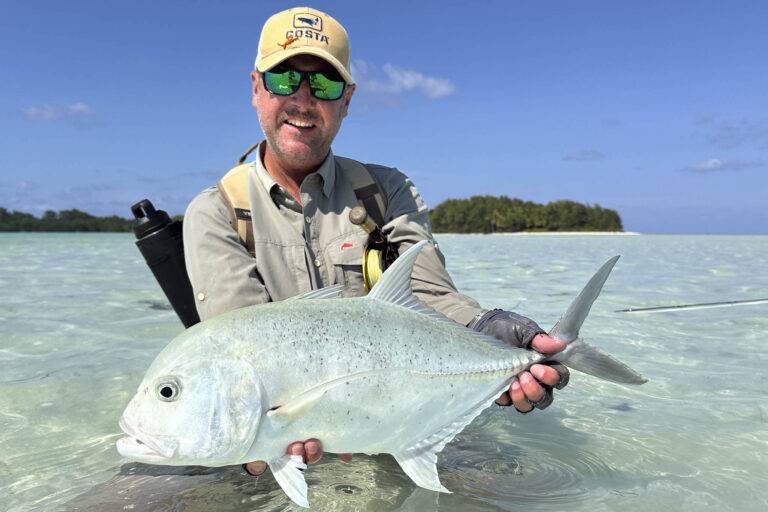
Trigger & Napoleon Fly Fishing
Lucipara’s got one of the best triggerfish populations in Indonesia, no doubt about it. Titan and moustache triggerfish are super common on the flats. Since Lucipara isn’t usually fished, the triggerfish there are pretty bold. Titan triggerfish often go for the crab fly a few times!
When you go fishing for triggerfish, you’ll mostly be wading through the sandy areas of the flats. We’ve noticed that there are a lot of triggerfish in these areas. Once you’ve spotted a triggerfish, slowly sneak up to casting range. It’s key to always make sure the crab is in the triggerfish’s line of sight. Triggerfish have excellent eyesight and can often see the crab from a long distance away. Then, it’s important to stay calm and slowly cut the crab into small strips.
Triggerfish are real fighters and can make long runs when hooked. So, when you go fishing, it’s best to use at least a 9-weight rod with enough backing.
Lucipara’s also got spots where you can go fly fishing for Napoleon wrasses. This species is pretty hard to catch, so it’s every fly fisherman’s dream. In Lucipara, you might actually be able to catch one of these fish with a fly.
On the flats, you can also catch other trevally species, like bluefin trevally and smaller trevally species. You’ll also find barracudas on the flats, along with grouper and coral trout. There’s a lot of biodiversity here!

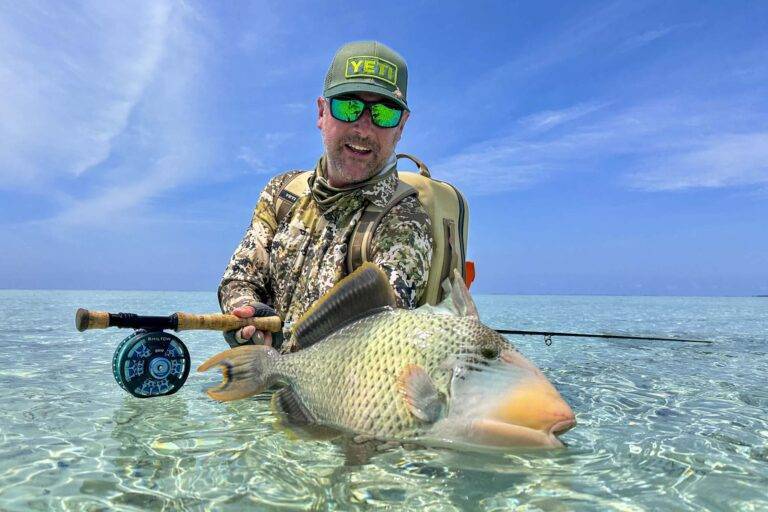
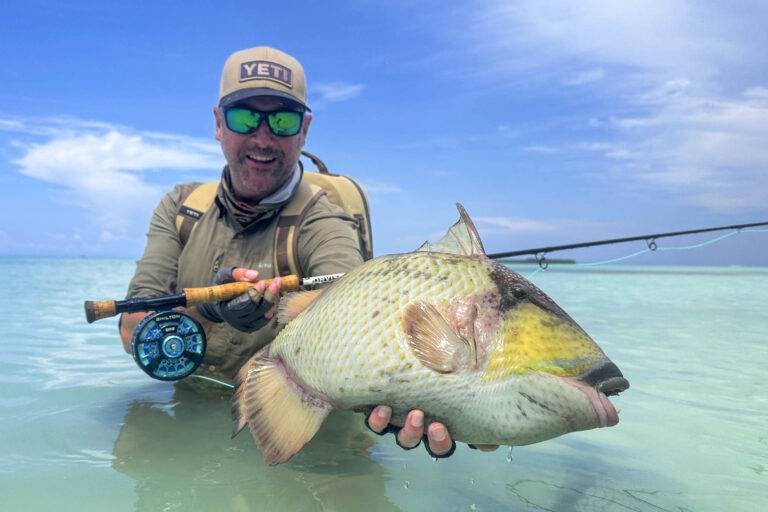
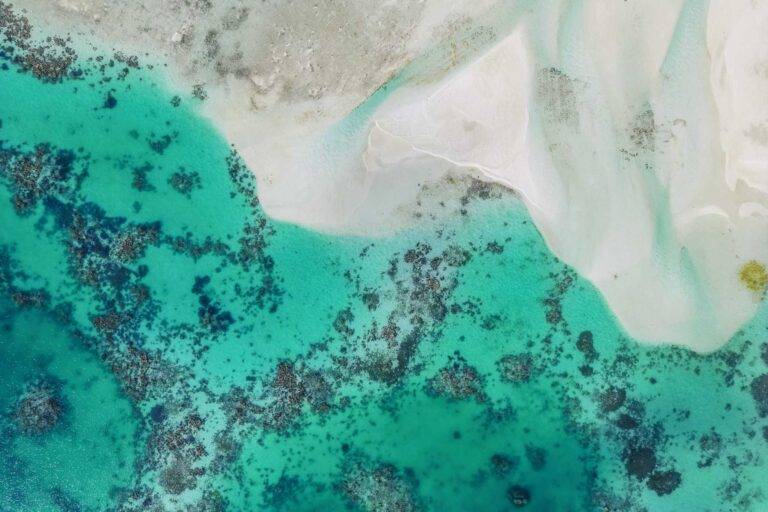

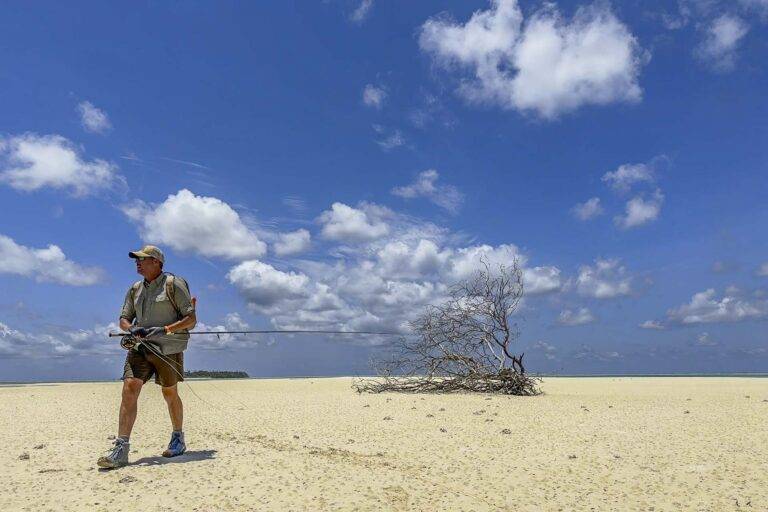
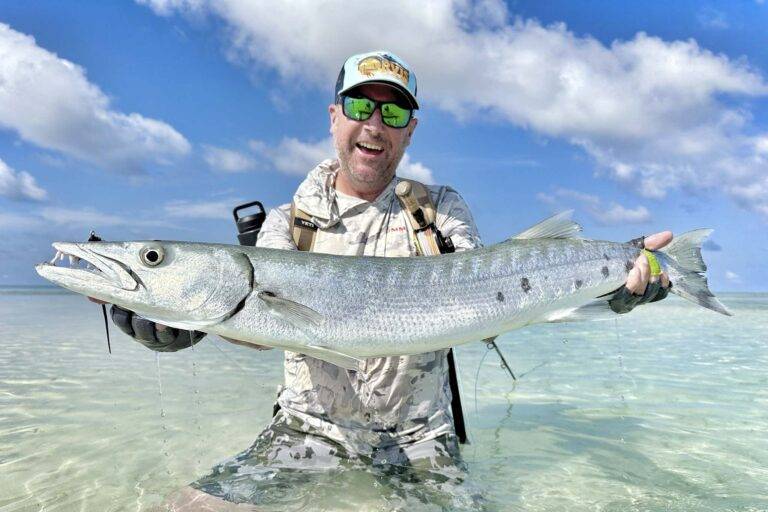
Accommodation Lucipara Fishing Trip
The Accommodation
Indonesia
Swiss Bell Hotel
The Swiss Bell Hotel is the best hotel in Ambon. The hotel has spacious double rooms with air conditioning and private bathrooms.
The hotel has a spa area, a restaurant in the lobby, and a great sky bar with a fantastic view of Ambon.
The hotel is about a 45-minute drive from the airport and a 15-minute drive from the port, so it’s the perfect base for your stopover on the way to Lucipara.
Catering
Meals: Breakfast included
Beverages: Drinks can be paid for on site according to consumption
Lucipara
Sea Safari VI
The Sea Safari VI is a traditional Phinisi Buginese schooner that can fit up to 20 people.
The ship was completely renovated in September 2026 and has eight twin cabins with air conditioning and private bathrooms on three floors. On your trip, you’ll be sharing a cabin with two other anglers.
The middle deck has a big communal area where meals are served. The menu here is influenced by local cuisine, and there’s a good selection of seafood and meat dishes.
There’s plenty of space in the front of the ship to store your fishing gear safely. There’s also fresh water available for rinsing your fishing gear.
The upper deck has a ton of seating and a Jacuzzi! On the sun deck, you’ll find sun loungers and another seating area.
Catering
Meals: Full Board
Beverages: Water is available on the boats during fishing trips. Extra drinks can be paid for on site according to consumption
Your fishing boats in Lucipara
The Boats
There are four different boats you can choose for your fishing trip to Lucipara. There are two smaller aluminum boats with space for two anglers, a large aluminum center console with space for four anglers, and a fiberglass longboat with space for four anglers.
Boat 1 & 2
2 anglers per boat
Two of the fishing boats are made of aluminum and can fit two anglers. The boats are stable in the water and have enough motor power. One of the boats has two motors.
Both boats have echo sounders and are typically used to drop off people fishing from the shore.
The boats have a bench seat and plenty of space for your fishing gear. There aren’t any rod holders, but you can store the rods in the back of the boat.
Boat 3
4 anglers
Our big center console boat was built specifically for fishing on Lucipara. The boat’s got two 60 hp engines, a helm, and enough space in the bow for casting.
Four anglers can pop and jig from this boat. The boat has an aluminum hull and an echo sounder.
The center console boat is great for popping and jigging around the islands. The boat’s also great for fishing in rough waters.
Boat 4
4 anglers
If you’re looking for something more traditional, we’ve also got a classic fiberglass boat. The boat has a 150 hp engine.
The boat’s slim design gives you space for four anglers to comfortably hop from the long bow.
The boat’s got an echo sounder. There aren’t any rod holders, but you can store the rods in the bow.
All boats are connected to each other by radio.
You need this fishing tackle in Lucipara
Tackle Talk
For fishing in Lucipara, you will need three rod setups. A heavy PE8 popper rod, a PE6 popper rod for the flats, and a PE6-8 jigging rod for jigging for doggy and other fish species. Poppers and stickbaits are used as bait. In Lucipara, stickbaits often work better than poppers. Therefore, you should bring a good selection of poppers and stickbaits.
Since you will lose quite a few jigs, you should plan on bringing at least 25 jigs!
- Popping Rods: PE6-8
- Popping Reels: 14-18k size, gear ratio min. 5,7:1
- Jigging Rods: PE 6-8
- Jigging Reels: 14k-20k size, gear ratio 4,4:1
- Rods for Flat Fishing: PE4-6
- Reels for Flat Fishing: 8-10k Reels
- Fly Rods: #9 & #11-12
- Fly Reels: #9 & #11-12
- Jigs: 150 - 300g, Butterfly shape, long butterfly shape
- Jig Colors: pink, silver, blue-green, orange, zebra, glow!
- Popper: 12- 20cm, middle & big heads
- Stickbaits: 12- 20cm, swimming & sinking
You need these poppers in Lucipara!
Popper / Stickbaits / Topwater
In Lucipara, the type of bait you use depends on the fishing method you’re planning to use. If you’re fishing from a boat at the edge of the reef, medium to large poppers are the way to go. The size should be between 150 and 190 mm.
Stickbaits have worked better than poppers in recent years. If you’re fishing from a boat, it’s a good idea to have a variety of 140-200 mm stickbaits, both sinking and floating. You’ve got to try the GT Ice Cream bait — it’s a game-changer! This bait works from both boats and the shore, so it’s definitely worth bringing along!
Stickbaits with a walk-the-dog action also work very well. We suggest the Glide Stickbait 220 or the Nomad Riptide 200.
When fishing on the flats, it’s best to use small poppers and floating stickbaits. These should be between 120-150 mm in size. You can’t go wrong with a Halco Roosta Popper or FCL Ebi Pop Popper, and walk-the-dog stickbaits like the Hybrida Tropic Walker are great, too!
You need these jigs in Lucipara!
Jigs
If you’re going to be jigging in Lucipara, you’ll need a good selection of 150-300g jigs. Butterfly shapes and elongated shapes (not too narrow) have been very effective recently. Jigs from Major Craft (Jigpara), Sakura Orion Jigs, and our Team Deep Sea Pelajig V2 and RockShock have been very successful here. But jigs from low-cost suppliers like AliExpress or Temu have also been successful.
Pink, silver, blue-green, orange, and zebra patterns are all great options. It’s crucial that all assist hooks have an octopus! This makes it more appealing and increases the number of people who catch on.
The hook size should be between 8/0 and 12/0. You’ll need to adjust the hooks based on the jig’s shape and size. We suggest using a minimum of 1.4 mm Kevlar or a minimum load capacity of 600 lbs for the assist hooks.
The best lines and leaders for GT fishing
Leader & Main Line
Leaders between 200-240 lbs are perfect for popping. It’s important to make sure you’re getting high-quality leaders, like the ones from Fishermen, Varivas, Nomad, or Climax.
When it comes to jigging, you’ll want a leader with a maximum breaking strain of 175 lbs. The diameter can vary. We suggest using a diameter of less than 1.0 mm.
The main lines should be high-performance PE lines. A PE8 (80 lb breaking strain) is the minimum. For jigging, we suggest using PE6-8 (65-80 lb breaking strain). When it comes to flat fishing, you can use line strengths of PE4-6 (40-65 lb breaking strain).
Some good options are Gosen Diver x8, Daiwa J-Braid x8, JB Line One, or other high-performance lines.
Terminal Tackle
Hooks & Terminal Tackle
You shouldn’t compromise on this. Just bring BKK brand hooks, please. You should bring GT-Rex hooks in sizes 3/0 – 5/0! If you’re going for smaller poppers, you’ll need a 1/0 – 4/0 BKK GT-Rex.
For jigging, we suggest using VMC hooks (Jigging Assist Hook 7264 BN) in sizes 8/0 – 13/0. And for the assist hooks, don’t forget the rubber octopuses!
Pop rings should be able to hold at least 220 lbs. Super Heavy Duty split and solid rings (solid rings #7.5 – #9) (split rings #10 – #11) are a good choice here.
You need this fly fishing tackle in Lucipara!
Saltwater fly fishing
You’ll need a good selection of fly rods and reels in Lucipara. For GT, we use fly rods in the #11-12 class. For triggerfish, rods in the #9 casting class are recommended. There’s a wide selection of rods from well-known manufacturers like Sage, Orvis, and G Loomis.
Reels for GT should also be adapted to the casting class of #11-12. For triggerfish, the reels should be adapted to the rod casting class. Reels in class #9 make sense. We suggest reels from Nautilus, Abel, Orvis, or Sage.
When it comes to casting lines, you’ll want a #11-12 saltwater casting line for GT. For backing, you should use at least 100m of 80lb braided line. There are now special fly lines for GT fly fishing, like from Scientific Anglers, RIO Elite, or Cortland.
You’ll also need #9 saltwater fly lines for triggerfish fishing. You’ll need at least 80 m of 50 lb braided backing.
If you’re a leader, you’ll need strong, high-quality fluorocarbon leaders. For GT, you’ll want a leader with a breaking strain between 80 and 130 lb. For triggerfish, a 16-25 lb fluorocarbon leader will do the trick. RIO and Shilton are both great leaders!
The best saltwater flies for GT, triggerfish & Napoleon!
Saltwater flies
If you’re into GT fly fishing, you’ll need a good selection of large flies designed specifically for that. Good GT flies include the Black Brush Fly, GT Semper Fly, and NYAP Popper Fly. Dark colors have always been a winner. Black/purple or pure black have worked well. Even so, it’s a good idea to pack a couple of light colors and a few bright colors.
If you’re going to fish for triggerfish, it’s a good idea to have a variety of crab and shrimp flies on hand. The color should be light and natural. But don’t forget to bring a few dark and orange colors with you!
Smaller crab flies have been more successful so far. So, it’s a good idea to bring more small and medium-sized crab flies with you. Since triggerfish tend to mistreat the flies, it’s a good idea to bring plenty of them with you.
Helpful tools for your fishing trip!
Other fishing equipment
It’s generally a good idea to bring a good pair of snap ring pliers. We recommend the hPa Game Plier. These allow you to easily open even super-strong snap rings.
A good, waterproof boat bag is also recommended. Zeck Fishing offers a few good bags. We recommend the Tackle Container Pro or the Tackle Container Pro Catfish!
Since you’ll often be popping and jigging for several hours at a time, we recommend bringing a pair of good gloves.
Since it can get very warm in Lucipara, we recommend UV-protective shirts, a sun hat, and LF50 sunscreen! You can order our expedition UV shirts directly from us!
For fishing from the shore, you should bring a waterproof backpack and reef or surf shoes! Wading socks are also a must! We also recommend bringing a pair of leggings. These help prevent chafing when wading on the flats.
Good polarized sunglasses are essential for fishing. We recommend glasses from gloryfy unbreakable. The best polarized sunglasses for anglers currently available are also indestructible!
You can take a closer look at the gloryfy unbreakable polarized sunglasses for anglers here: Polarized Sunglasses for Anglers!
How much does a fishing trip to Indonesia cost?
Price
Included
- english speaking tour leader**
- 1 night in a hotel, DBL, B&B
- 10 nights on the mothership, DBL, FB
- 8 days fishing with guides
- Airport- & Boat Transfers
- Fishing Licenses
- Photo- & Videodocumentary**
Not included
- Tips (ca. 250€)
- International Flight & Visa
- Travel Insurance*
- extra luggage fees*
- additional meals/drinks
- Popping- & Jigging Tackle*
- * optional/exempt **only if the minimum number of participants is reached
- Minimum number of participants: 12
Price per person
2026: 4299,-€
2027: 4399,-€
Extras
On request
Booking statuses
Lucipara - Doggy Island
2026 / 2027
Indonesia Fishing Holiday - Lucipara Atoll
The best catches!

